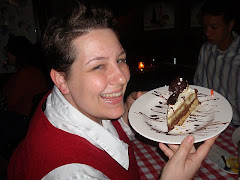August 31, 2007
Cancer Society Focuses Its Ads on the Uninsured
By KEVIN SACK
ATLANTA, Aug. 30 — In a stark departure from past practice, the American Cancer Society plans to devote its entire $15 million advertising budget this year not to smoking cessation or colorectal screening but to the consequences of inadequate health coverage.
The campaign was born of the group's frustration that cancer rates are not dropping as rapidly as hoped, and of recent research linking a lack of insurance to delays in detecting malignancies.
Though the advertisements are nonpartisan and pointedly avoid specific prescriptions, they are intended to intensify the political focus on an issue that is already receiving considerable attention from presidential candidates in both parties.
The society's advertisements are unique, say experts in both philanthropy and advertising, in that disease-fighting charities traditionally limit their public appeals to narrower aspects of prevention or education.
But the leaders of several such organizations, including the American Heart Association, the American Diabetes Association and the Alzheimers Association, said they applauded the campaign's message that progress against chronic disease would be halting until the country fixed its health care system.
As in the past, the heart association is using its advertising dollars these days to promote more rigorous exercise and healthier diets. The most recent cancer society campaign encouraged screening for colon cancer, including a memorable commercial in which a diner plucked — and then ate — a lima bean polyp from the intestinal tract he had carved in his mashed potatoes.
But John R. Seffrin, the chief executive of the cancer society, which is based here, said his organization had concluded that advances in prevention and research would have little lasting impact if Americans could not afford cancer screening and treatment.
"I believe, if we don't fix the health care system, that lack of access will be a bigger cancer killer than tobacco," Mr. Seffrin said in an interview. "The ultimate control of cancer is as much a public policy issue as it is a medical and scientific issue."
The two 60-second television commercials that form the spine of the campaign make that point.
One features images of uninsured cancer patients, appearing hollow and fearful. "This is what a health care crisis looks like to the American Cancer Society," the narrator begins. "We're making progress, but it's not enough if people don't have access to the care that could save their lives."
The other commercial depicts a young mother whose family has gone into debt because her insurance did not fully cover her cancer treatment. "Is the choice between caring for yourself and caring for your family really a choice?" the narrator asks.
Census figures released this week show that the number and percentage of people in the United States without health insurance rose last year, to 47 million and 15.8 percent. A 2003 study estimated that one of every 10 cancer patients was uninsured.
Other surveys have found that one of every four families afflicted by cancer, which is projected to kill 560,000 Americans this year, is effectively impoverished by the fight, including one of every five with insurance.
The cancer society plans to buy time on network and cable channels from Sept. 17 to Thanksgiving, said Greg Donaldson, the group's vice president for corporate communications. There will also be advertisements in magazines and on Web sites.
With nearly $1 billion in revenues, the cancer society is the wealthiest of its peers and has spent about $15 million annually on advertising since 1999. By comparison, Geico, the automobile insurer with the "Caveman" advertisements, spent about $14 million on network advertising in the first quarter of 2007, according to TNS Media Intelligence, a tracking firm.
Advertising about the health insurance crisis is not uncommon among more broadly based medical organizations and other interest groups.
Last week, the American Medical Association kicked off a three-year campaign called "Voice for the Uninsured" that will begin with $5 million in advertising in early primary states. AARP, in conjunction with the Business Roundtable and the Service Employees International Union, recently began a similar effort called "Divided We Fail."
This year, the cancer society formed a collaborative with the heart, diabetes and Alzheimers associations, as well as AARP, to promote awareness of the health access problem. The group adopted as common principles that all Americans deserve quality, affordable health care with transparent costs.
But the cancer society is the only disease-focused group ever to have dedicated advertising resources to the topic, said officials with other charities and with trade groups."I've never seen anything like it before," said Bill Novelli, chief executive of AARP and, in a previous career, a co-founder of the Porter Novelli public relations firm. "It's taking a different tack for them."
That a charity like the cancer society felt compelled to join the access debate reflects both the urgency and the resonance of the issue. Nonetheless, Mr. Donaldson said it was "risky business" for the tax-exempt group.
It steered away, he said, from promoting solutions that could be viewed as partisan, like mandatory insurance or single-payer government coverage. Rather, he said, the commercials are intended to urge action by the next administration, and to drive viewers to a Web site linked to the group's advocacy and lobbying arm.
"We very much see a moral imperative to raising the discussion," Mr. Donaldson said, "but we understand there's a need to be appropriate."
Cancer society executives said they had heard little dissent from volunteers and donors, and several regional officials said they supported the new approach.
But others called the campaign misguided. Valerie C. Robinson, a longtime board member of the Jacksonville, Fla., chapter, said expanded access to insurance coverage was "not our fight."
"To me, it's throwing away money that we could have put into providing free mammograms or free PSA tests or free colonoscopies," she said.
Mr. Seffrin initiated the advertising campaign after being pushed by the society's board to make faster progress toward its goals of reducing cancer death rates by 50 percent and incidence rates by 25 percent from 1990 to 2015. If trends continue, the actual reductions are projected to fall well short, perhaps by as much as half.
While the decline in death rates is accelerating, studies have shown that if cancer was diagnosed more in its early stages, the rates would fall faster. And new research is confirming that insurance status often determines whether a person's cancer is diagnosed early or late.
One study published this year found that uninsured breast cancer patients were more than twice as likely to have their cancer diagnosed in late stages as those with private insurance. Other studies have found similar results with cancers of the larynx and mouth.
"The truth is we know what's going to happen with cancer if we don't intervene," Mr. Seffrin said. "It will become the leading cause of death in the world, needlessly."
Copyright 2007 The New York Times Company
Subscribe to:
Post Comments (Atom)









No comments:
Post a Comment